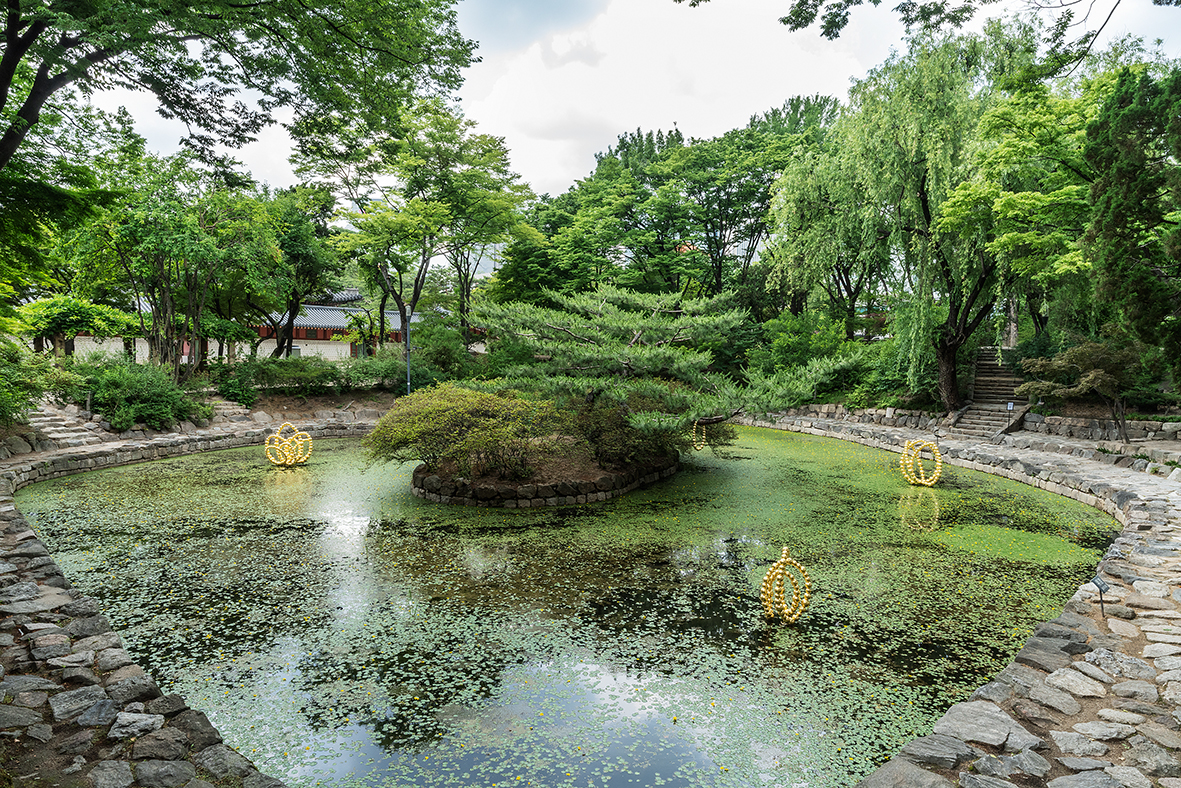
SPACE July 2022 (No. 656)
The private exhibition ‘Jean-Michel Othoniel: Treasure Gardens’ by French contemporary artist Jean-Michel Othoniel, who is renowned as ‘an artist of glass beads’, is now on display at Seoul Museum of Art and Deoksugung Palace Garden from the 16th June to 7th August. The works that explore the forms of flowers and water, as well as flames and eternity, via reflective materials such as glass, stainless steel, and gold, exude the brilliance of light and captivate the viewer’s attention. This exhibition where 74 of his works ‒ including his main and recent works ‒ that he has been working away on over the past 10 years are here displayed in Othoniel’s largest private exhibition since ‘My Way’ at Paris’s Centre Georges-Pompidou in 2011, and therefore it is significant that he chose Korea’s spatio-temporality as his stage. As Othoniel’s works are known for their unique interpretations of artisanship and tradition ‒ which the contemporary art scene has largely ignored ‒ to create an awe-inspiring world integrating both human and nature, individual and community, tradition and contemporary, and reality and myth, it makes one wonder how he had begun to interpret the theme of the ‘garden’ this time around. Let us stroll through the space littered with his works to familiarise ourselves with his understanding of the garden.
Brilliance: A Door to Another World
One early summer day, past the Daehanmun Gate, I walk around the pond lush with vegetation in the Deoksugung Palace Garden. Above the clear water surface covered with lotus flowers, a Gold Lotus Flower made with a string of gold beads is floating on it. Focusing on the pond centre, I then see a Gold Necklace hanging on the branches of a pine tree. It is known that lotus flowers ‒ which even blossom from the mud ‒ can bloom even after a thousand years. What are the reasons behind the use of the lotus flower ‒ which represents vitality, fertility, and creativity ‒ made with reflective beads float on water, and putting a bead necklace on the tree as though one is making a wish? As I approach the museum by walking past Jeongdong-gil, I notice a pair of knotted beads ‒ Le Nœud de Babel (Babel Knot) and The Knot of the Imaginary ‒ at both sides of the museum entrance. Upon closer inspection of the bead’s surface, a myriad of reflections of the sky, tree, building, urban landscape, and myself appear in repetitions. Upon stepping into the exhibition hall, a 3m-tall, massive silver necklace ‒ Collier Autoporté Miroir (Self Standing Mirror Necklace) ‒ announces the official start to the exhibition. The way in which these oppressively large beads are suspended magically as if against gravity arouses the uneasy expectation of their imminent collapse right at the moment this magic is dispelled. What is it about sculptures made of simple forms such as beads that they bring about such varied mixtures of emotions, feelings of curiosity, and imagination? Othoniel’s works that might seem simply ornamental due to its reflective and shiny properties evoke different impressions according to material, form, size, location, and installation method. It reminded me of Othoniel’s words that in his works with beads he discovered that reflectivity and beauty offer ‘the passageway of mental exchange and a kind of door to another world’.
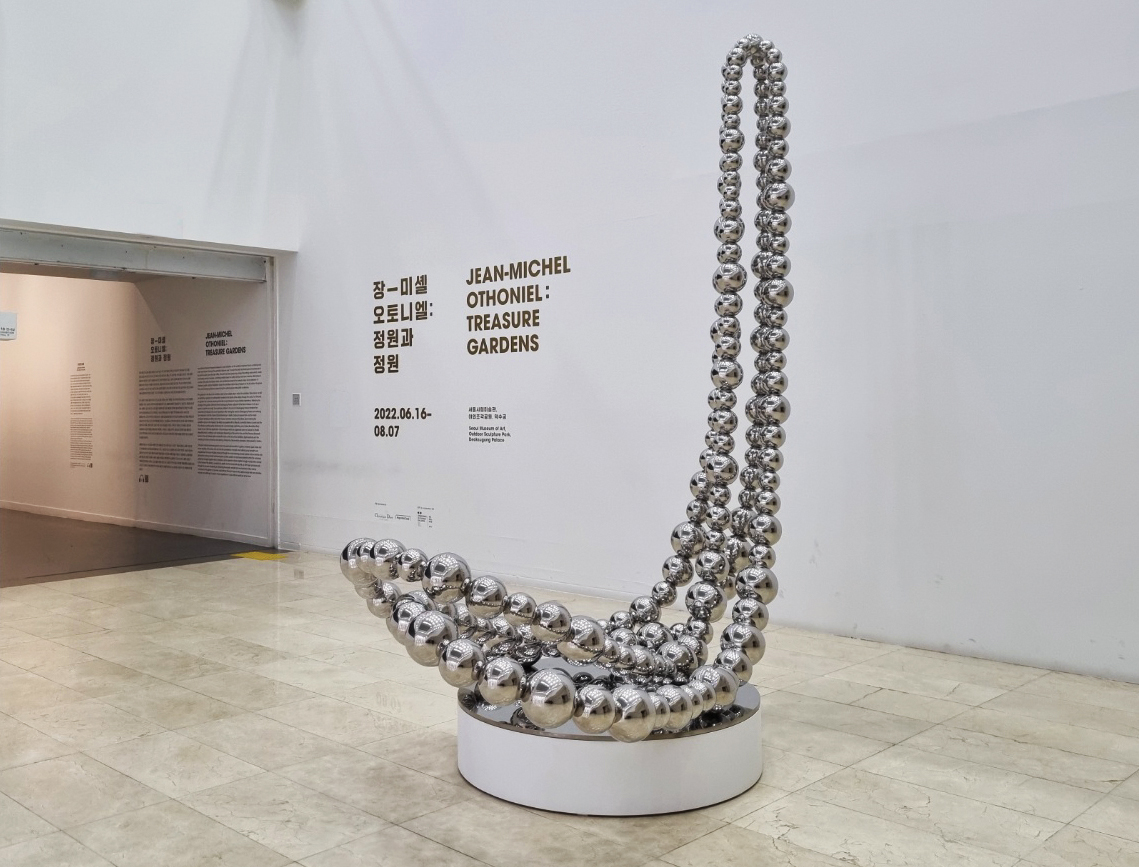
ⓒBang Yukyung
Art: Self-Healing and a World where Beauty and the Wounded Coexist
Behind the birth of Othoniel’s brilliance and ‘magic’, there is loss and absence, despair and pain. Othoniel, who was born in a small southcentral city in France called Saint-Étienne in 1964, was a boy who dreamed of becoming an artist, and from a young age he frequented museums. He made a name for himself as he participated in Kassel documenta in 1992 and showed his talents and gained international fame with his public artwork Le Kiosque des Noctambules (The Kiosk of the Nightwalkers, 2000) installed in an underground metro station in Paris. But, as an artist, his origins can be traced back to Autoportrait en robe de prêtre (Self-Portrait in Priest’s Robe, 1986). After experiencing the suicide of a priest who was his lover, Othoniel sublimated his mourning for his lover and the pain of loss into art by repeating a series of running and falling while wearing a priest’s robe as though he was resisting against the limits of his body. Some time later, using materials such as beeswax, phosphorus, and sulfur, Othoniel created a strange sculpture that is a mixture of male and female bodily forms. After discovering obsidian on the volcanic island Lipari in Italy in 1992, Othoniel turned his focus to this glass material. Glass, which is one of the artisan materials that was largely ignored in contemporary art history, has a two-faced property that is both hard and yet fragile, light and yet sensitive. From the second half of the 1990s, Othoniel began a close collaborative relationship with the glass artisans in Murano, Italy to produce glass beads with deliberately added scratches and flaws. With Le Collier-Cicatrice (The Scar Necklace, 1997) ‒ which Othoniel produced for a human rights movement for gender minorities during the first commemoration of artist Felix Gonzalez-Torres’ death from AIDS ‒ as a start, Othoniel’s works take on a more abstract character on a larger scale as can be seen from his glass bead necklaces hanged on trees at Peggy Guggenheim Collection in Venice (1997) and his huge necklaces. The medium of glass beads that allowed him to reveal his wounds and communicate with others was a way of self-healing. Sometime after, Othoniel commented that ‘whether good or bad, beads are like scars reflective of the twists and turns of life, talismans that reminds one of the sad, painful, and regretful memories that one wants to keep.’ As he gradually healed himself by converting the pains and wounds of reality into a message of hope and wish through his bead works, Othoniel’s works slowly transitioned to work of a brighter and lighter mood.
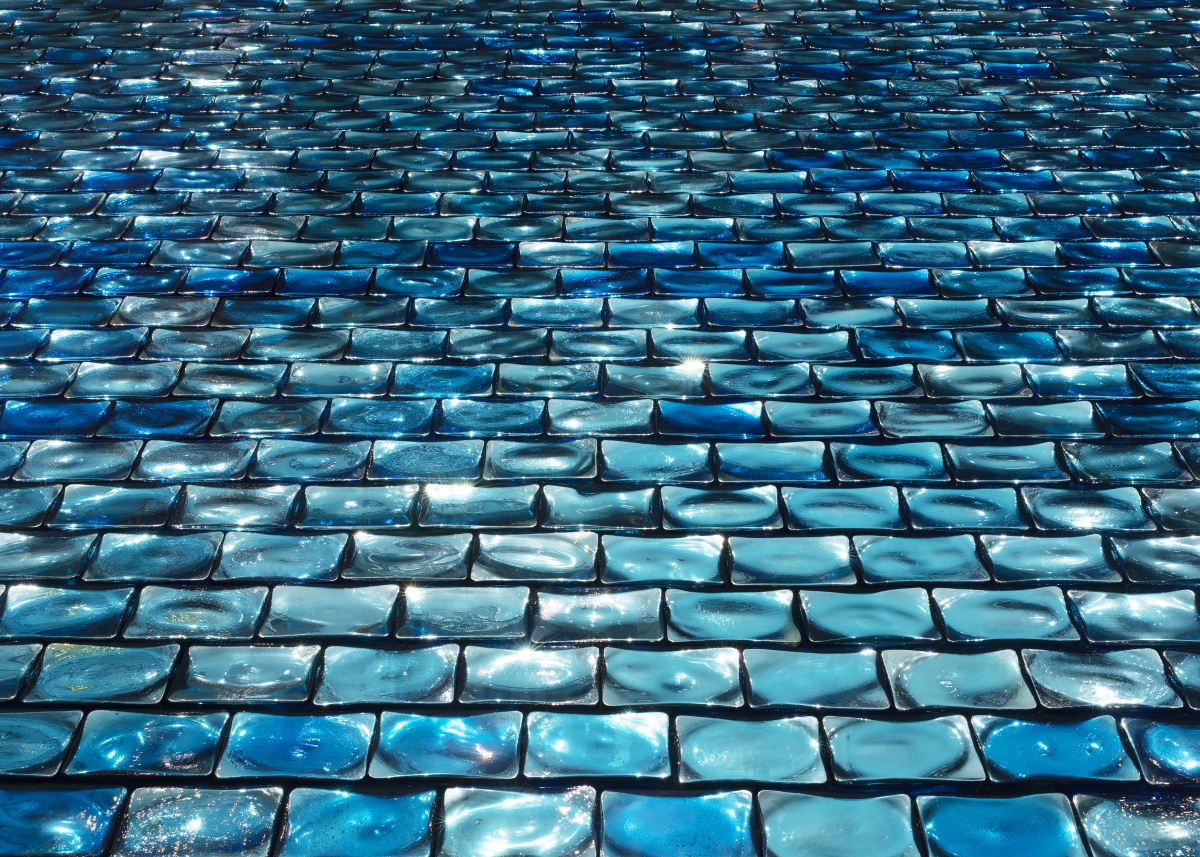
Flower: A Metaphor That Connects the Louvre and Deoksugung
The paintings that filled up the first space in the exhibition hall reveals Othoniel’s longstanding interest in and obsession for flowers. In this exhibition, nine paintings created by placing ink on white gold leaf canvases are displayed. The black ink panting La Rose du Louvre (The Rose of Louvre) was a commission from the Musée du Louvre in 2019 for its 30th anniversary for the opening of its glass pyramid building. This work, which is based on the rose motif used in Peter Paul Rubens’ The Wedding by Proxy of Marie de’ Medici to King Henry IV stored at Musée du Louvre ‒ which is a painting that reflects on the historical situation where political marriages were forged in the name of increased power ‒ expresses Marie’s (who requested the original painting) life that represents power, victory, love, and passion in the geometrical shape of a rose. Othoniel mentioned in an interview that ‘the symbol of flower acts as a catalyst to view the world in a new way’ and explained that while his works tend to ‘draw out an abstract concept from real flowers,’ however, ‘for the first time, (this work) was inspired by a flower in a painting.’ The coloured ink painting placed next to it is his recent work Plum Blossom that he drew from a plum blossom which represents values such as resistance and tenacity. Othoniel discovered from Deoksugung ‒ which plainly captures the history of Korean Empire ‒ traces of plum blossoms (which was a symbol of the Korean Empire royalty) throughout the palace. This painting of the fluttering pink flower leaves and the yellow stamens, along with The Rose of Louvre, present a scene where two royal histories of France and Korea can be unified under the ‘flower’. Whenever light is reflected by the white gold leaf canvas surface, the flower on the screen floats like a virtual image and ambiguates the boundary between painting and sculpture.
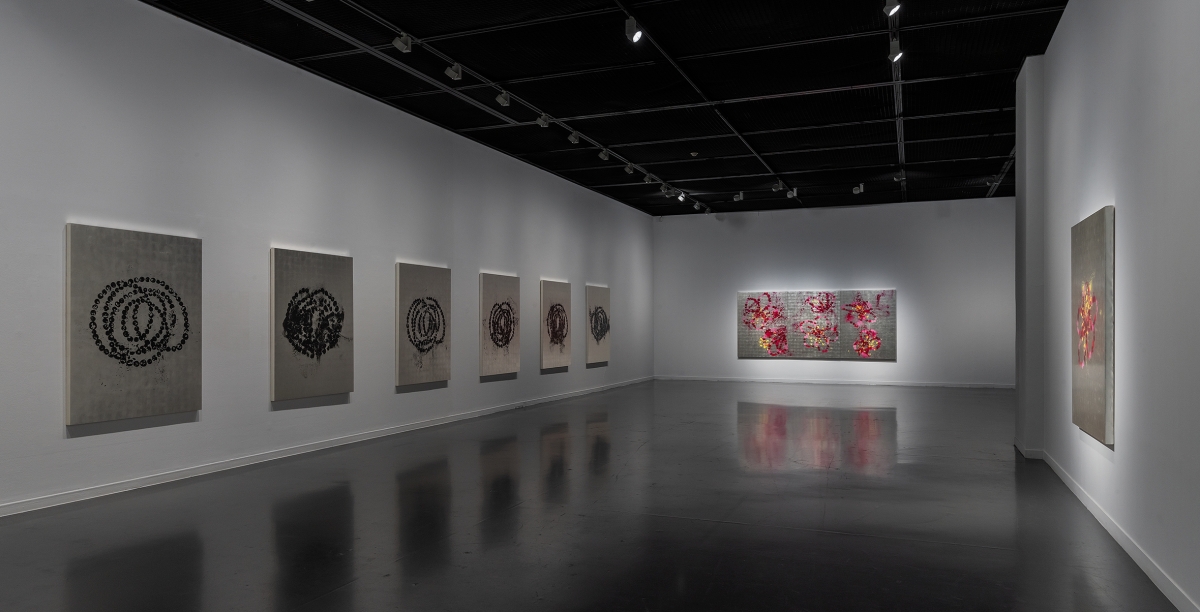
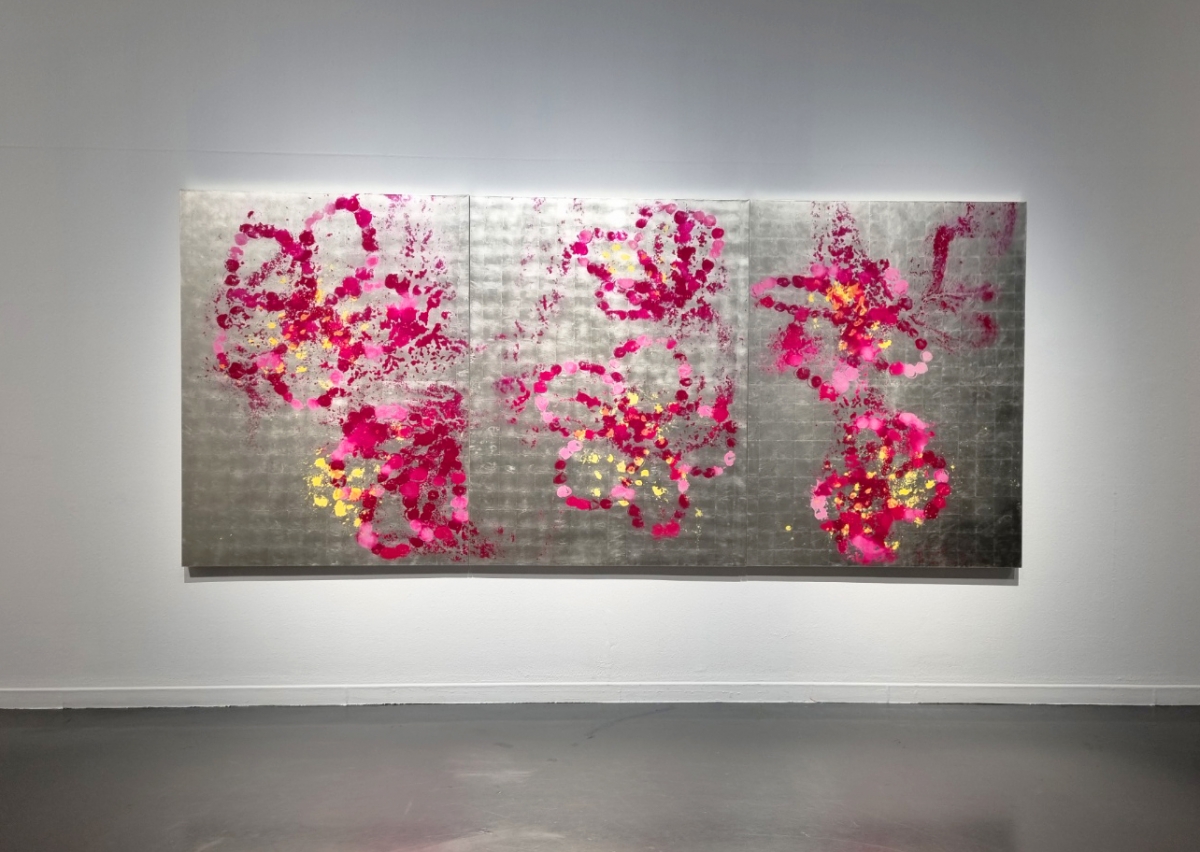
ⓒBang Yukyung
Bricks and Knots: A Poetic World Floating on a River of Hope
In this exhibition, the work that most clearly represents Othoniel’s inspiring and mysterious poetic world is his La Rivière Bleue (Blue River). Glass bricks made by using a bluish pigment called Firozi in India cover a floor area of 26 × 7m to suggest the sky, sea, and water. The artist placed 17 bead sculptures including Pink Lotus and the knot series on the bricks to create a dreamlike world where every element reflect light on one another. As he received inspiration from the bricks piled up by the streets during his travels to India to meet glass artisans, Othoniel discovered an energy residing within the Indian who lived each day with a desire and hope toward a better life— the hope of building their own house someday. By combining glass and brick, Othoniel comes to develop a material where contrasting properties of hardness and fragility, everydayness and specialty coexist. To realise this, Othoniel collaborated with the glass artisans in Firozabad in India who use traditional glassblowing techniques to produce glass. This manually produced glass bricks show subtle differences in their respective form, flaw, and colour. In a sense, these elements with differences and imperfections come together to create a harmony. Precious Stonewall, which was created by combining glass bricks of two different colours, is a work that ‒ like a point of entry to a personal diary ‒ expresses the emotional turbulence that Othoniel experienced during the periods of lockdown during the pandemic. Just as its name suggests, this series work that has been installed along the exhibition wall reminds one of the ‘Stonewall Riots’ that occurred at the Stonewall Inn in New York City during June 1969 where gender minorities resisted police raids and arrests. The reflective lights produced from the impurities and irregular surfaces of glass walls produce varying waves and generate a sense of melodic-like vitality. The light of Stonewall, that the artist discovered in such an extreme situation where communication and exchange were cut off, revived his dulled senses and gave him hope for future freedom. The knot series (2009‒) display Othoniel’s new exploration in his bead sculptures. Le Nœud de Lacan (Lacan Knot) where Othoniel reinterprets Lacan’s philosophical concepts into forms out of respect for the philosopher, and Noeud Sauvage (Wild Knot) which, following the concept of a wild knot as developed by a Mexican mathematician, can go through infinite transformations in 3D space without ever getting unraveled—both these works can be seen as Othoniel’s attempt to realise the principle of reason and logic in art. Through his work that conceptually manifests the intangible idea of ‘infinity’ via reflections on the bead surfaces, one can observe Othoniel’s will to expand the realm of art through collaborations and his desire to communicate with a greater part of the world.
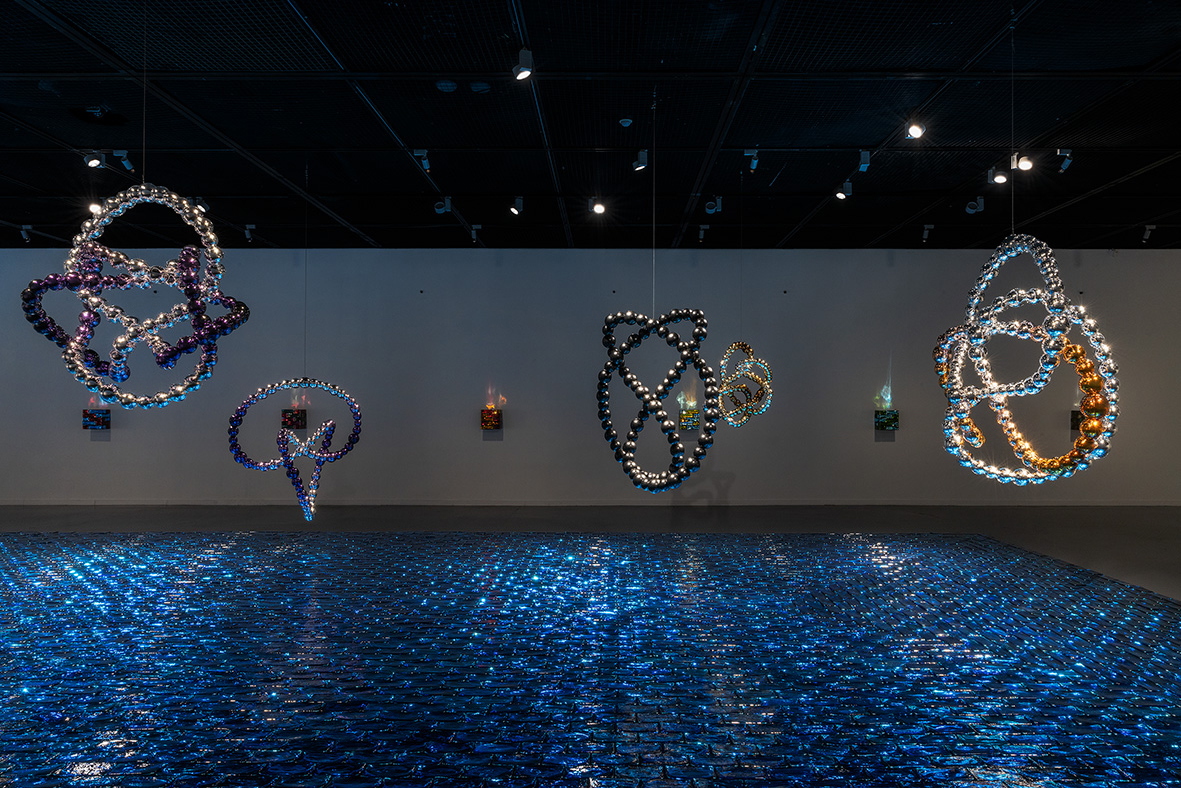
Agora and Oracle: The Way Art Reflects Us
The exhibition ends with the series Agora and Oracle. The shelter made of 2,750 pieces of stainless-steel bricks is a work that Othoniel created during his stays in New York City while thinking of the agora in Greece that acted as a place for free discussion among citizens. This work, which embodies a space of unprejudiced, unoppressed, and unbiased communication, conveys Othoniel’s wishes for art to function as a realm capable of protecting the freedom of ‘speech’ from this yet unfree world. Also, in the repetition of small modules made of beads and bricks that pile up into a structure of a larger scale, one can see from Agora that Othoniel’s work is moving beyond sculpture to the realm of architecture. Oracle is the title given to ancient Greek sages who delivered inspiration and insights into life, divine revelations, and prophecies. Just as the flames soaring above the glass bricks resemble an altar and evoke a sense of religious sublimity, Othoniel, who believes of a spirituality in art, claims that an artist’s intuition can act as a prophetic vision of a future.
Bang Soyeon (curator, Seoul Museum of Art) who curated this exhibition suggested that while the theme ‘Treasure Gardens’ refers to various actual exhibition spaces, it also includes the meaning of a location defined by art and the garden of reflective thought that is formed in the minds of its visitors. Within this entrancing garden by Othoniel, our sensations will no doubt be prompted to respond. Moreover, we will come to see that there is a world of pain and scars that coexists behind those beautiful lights. This is because art is a different kind of mirror, one that reflects reality in a way never before imagined.(written by Bang Yukyung)
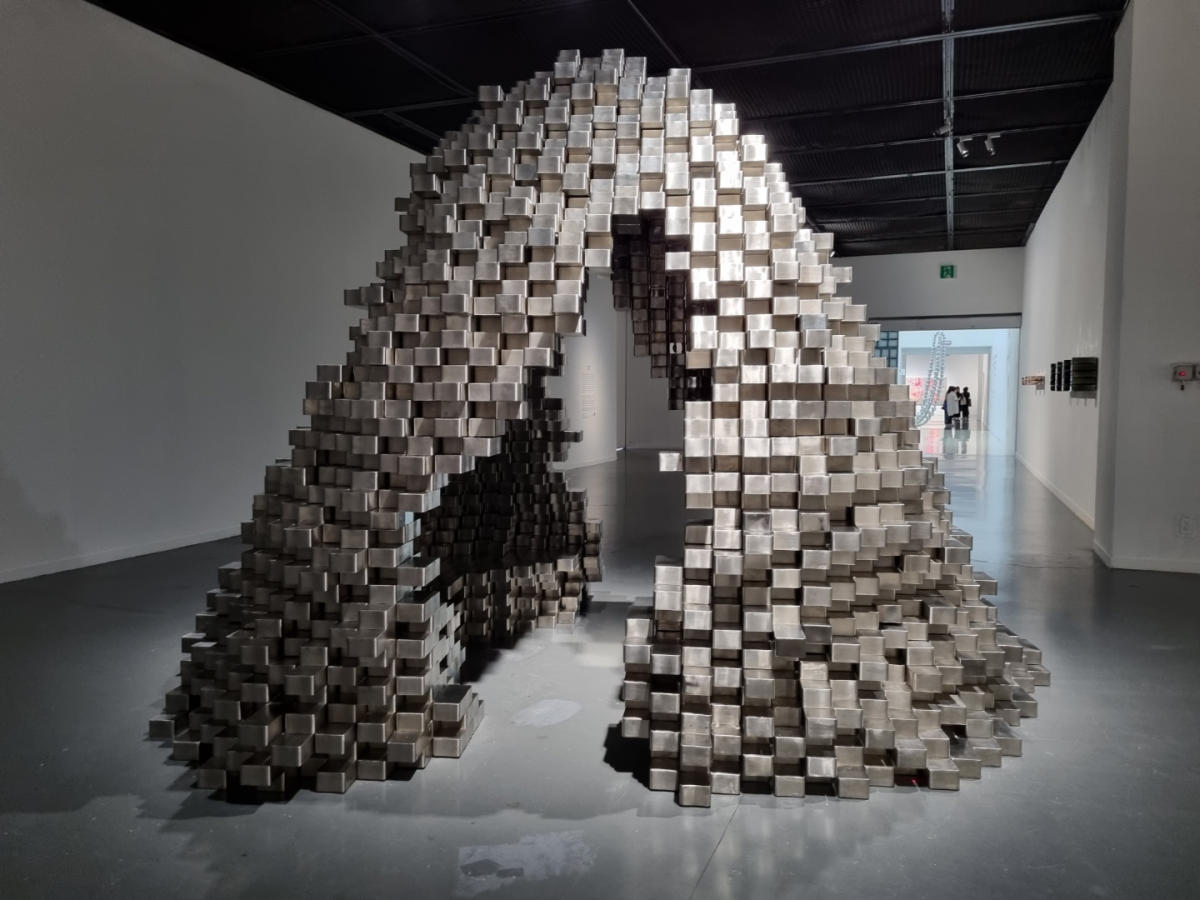
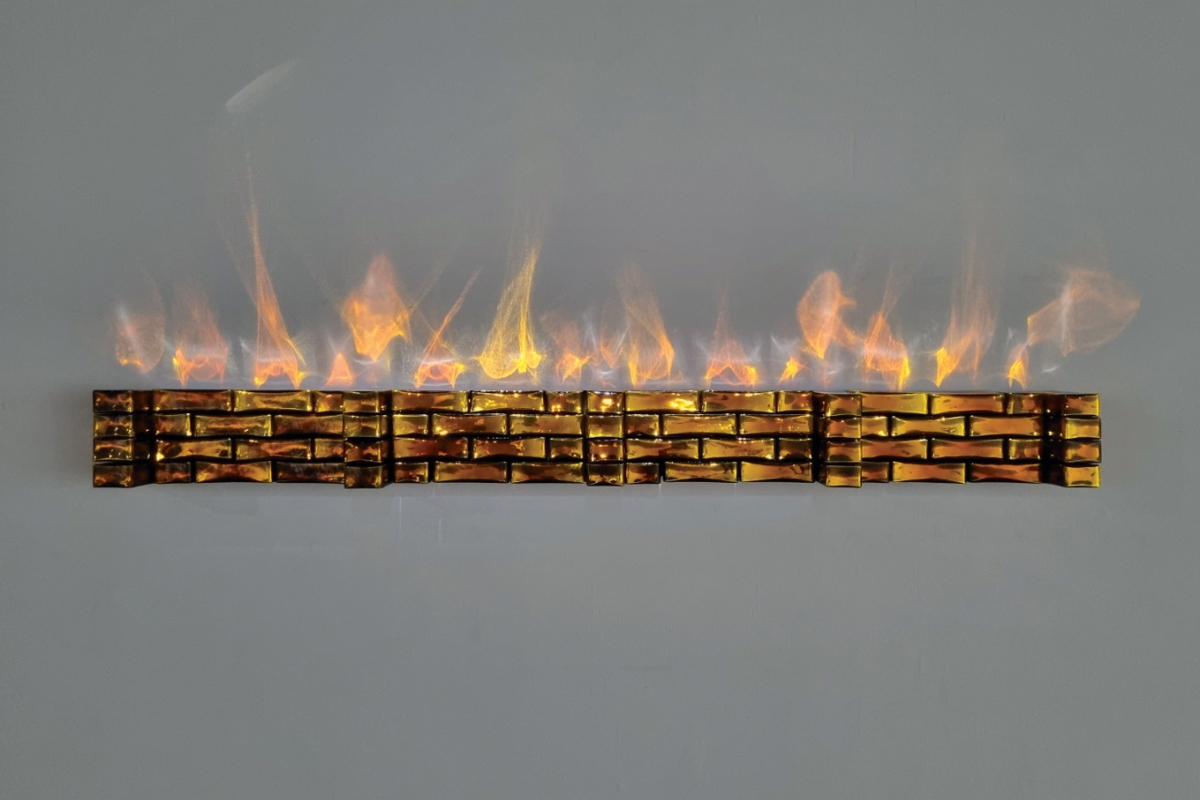
(top) Agora, 2022 ⓒBang Yukyung / (bottom) Oracle, 2022 ⓒBang Yukyung





